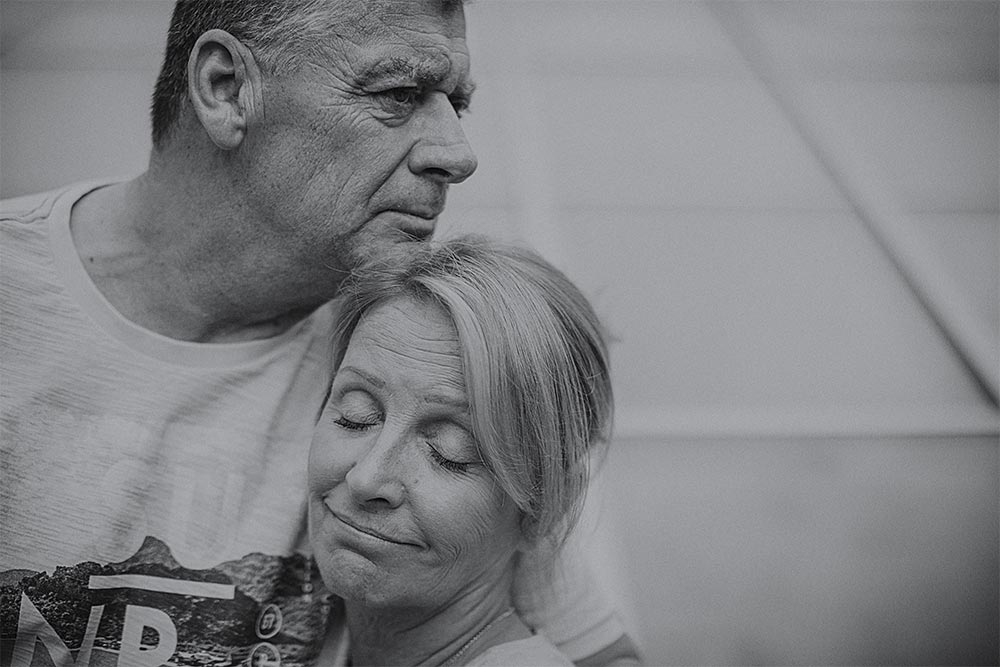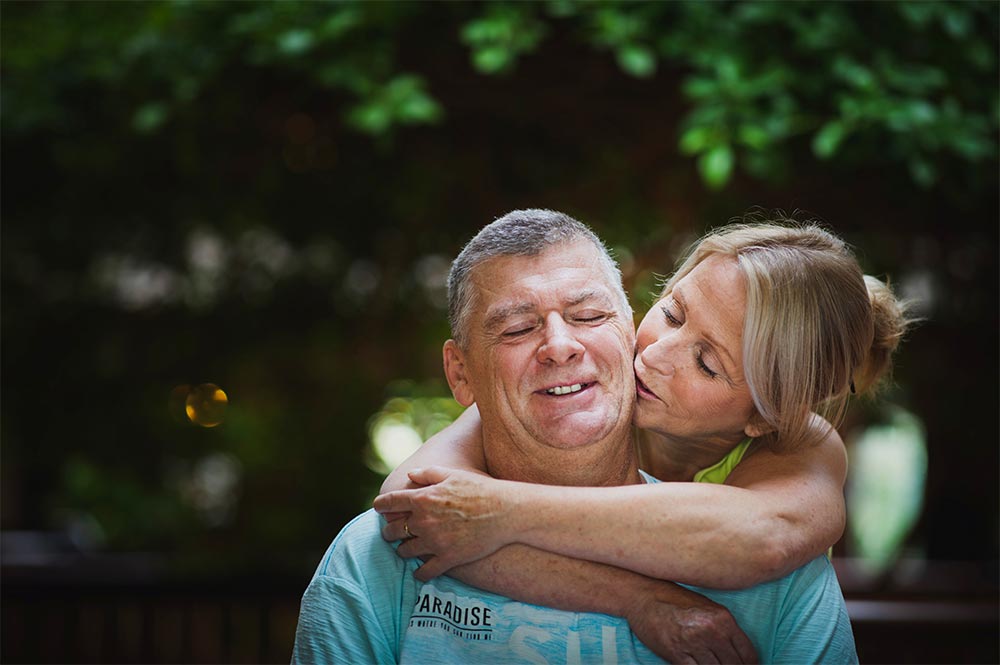Tough Guy
Bill McKinlay thought he was tougher than diabetes — until a related stroke nearly killed him.
Bill McKinlay, a superintendent and safety officer at a large construction company, is a tall, broad, energetic man of 60. His muscled arms, tattoos and say-it-like-it-is attitude hint that he’s familiar with the school of hard knocks. “I was the tough guy,” he says. “In fact, I was the lead tough guy. I’ve had 344 stitches, heart surgery, both shoulders broken twice, surgery on both knees, a broken foot at least once. I always threw caution to the wind.”
Bill, who was diagnosed with type 2 diabetes five years ago, is also a big softie. He tears up when he speaks of his three grown children, all living in British Columbia — “They are beautiful; my best friends” — and his wife Christine.
In June 2019, Bill experienced a minor stroke. In hindsight, he realized this smaller stroke foreshadowed larger problems ahead. Then, on July 23, 2019, the big one hit: a catastrophic stroke affecting his brain stem, thought to be a result of uncontrolled diabetes. “It never entered my mind that I would have a stroke, until I had one,” says Bill. “It was terrifying.”
Two strokes, one month apart
The day of his first stroke, Bill was at work when his vision suddenly became fuzzy and his breathing laboured. “I thought, ‘If there is a stroke scenario, this is probably it.’ I called Chris and said, ‘Babe, I think I’m having a stroke.’” He went to the hospital and indeed had a stroke in the waiting room.
The first stroke “didn’t take anything away,” so Bill and Christine continued with their lives. They flew to Vancouver to visit a newborn granddaughter and, when they returned, drove to Penetanguishene to look at houses there.
It was a month after the first stroke, minutes after signing an offer on a house, that Bill suffered his second, devastating stroke. “The artery in my brain stem was closing. I was trying to portray to Chris that it was not severe, but I knew it was,” he says.
Bill was taken by emergency helicopter from Midland to Toronto. “I was wide awake and I remember how scared I was,” he says. Once at the hospital, he adds, doctors considered putting a stent in the artery, but it was too badly damaged.
Bill’s second stroke resulted in the loss of his ability to walk, talk, go to the bathroom on his own, think clearly and, initially, to swallow. He was moved to Bridgepoint Active Healthcare, part of Sinai Health, where he spent six weeks working with his care team to regain the skills he lost.
 Bill and his wife, Christine
Bill and his wife, Christine
What is exceptional about the care Bill received at Bridgepoint is that it was focused not only on rehabilitation, but also on another critical aspect of his future: managing his diabetes. “When patients are recovering from a stroke, managing sugars often falls to the bottom because there are bigger fish to fry,” says endocrinologist and internal medicine specialist Dr. Dina Reiss, one of Bill’s doctors.
In 2013, Dr. Reiss developed a novel endocrinology consultation service at Bridgepoint that is unique among rehabilitation hospitals. She visits patients in their rooms and helps to untangle and treat a complex array of risk factors, thus improving their overall health and prognosis.
One of the complications of poorly managed diabetes — which many people are unaware of or do not take seriously — is stroke. “With high blood sugar, there is an increased risk of plaque formation in the arteries and therefore a higher risk of stroke,” says Dr. Reiss. “Fifty per cent of the patients I manage at Bridgepoint have diabetes.”
I was a tough guy until I realized I wasn’t.”
Along with Dr. Reiss, Bill’s care team included an occupational therapist, physical therapist, speech language pathologist, dietitian, pharmacist and specialized nurse. “We help patients living with diabetes understand what diabetes is and how to better self-manage the disease,” says Kate Pettapiece, Advanced Practice Nurse for Complex Medical Services and a Certified Diabetes Educator. “What does the patient know, or not know, about diabetes? We discuss the patient’s specific goals and problem-solve strategies around healthy nutrition, alcohol consumption and regular physical activity, as well as how to monitor blood sugars, take diabetes medication or insulin and manage stress effectively — all important aspects of self-management.”
Besides talking to patients about reducing what she calls “the real estate” around their midsections and managing their weight, she reviews with them and their family members the practicalities of measuring blood sugar, how to interpret the numbers and what to do if blood sugar is too high or too low. Before they are discharged, she refers each patient to a diabetes education centre close to home.
When Bill was first diagnosed with diabetes, he was prescribed metformin, an oral diabetes medicine that helps control blood sugar levels. But he did not receive specialized diabetes care and had no idea of the danger he was in. “We never drilled down and never got an endocrinologist involved the way we did here at Bridgepoint. I wish we had.”
A family experience
Stroke and rehabilitation are, of course, a family experience, and Christine has been intimately involved every step of the way. A self-employed head hunter in the technology sector, she dropped everything to be with Bill. “I was at the hospital every day because it didn’t look good,” she says. “It is amazing how much progress he has made.”
 Bill and his wife, Christine
Bill and his wife, Christine
The impact on the couple has been huge. “Nobody ever sees a stroke coming,” says Christine. “We were just getting excited about the next phase of life, planning to travel more and relax a bit, and then one day, ‘Boom!’ It’s a stroke. A month later, ‘Boom!’ Another one. It’s hard on me and it’s hard on him. We’re still trying to figure it out.”
Christine is grateful to Bridgepoint. “Their multidisciplinary team and lovely surroundings gave him peace of mind. It is an awesome facility.”
Bill agrees, describing his care team. “They’re amazing at what they do. They saved my life, no doubt about it.”
The next chapter
In September, Bill returned home to Etobicoke. He and Christine are learning to navigate his needs while packing up to move to the new house they bought just before Bill’s stroke. They look forward to a quieter, less stressful life, with Bill having taken early retirement.
Though his progress has been impressive, he hasn’t fully regained his independence. He still suffers from vertigo, a feeling of fuzziness in his head, and an almost imperceptible speech impediment. He walks with a walker, and even so, relies on Christine to be beside him for longer distances.
He hopes his story will be a cautionary tale to others to proactively manage their health especially his son who “thinks he’s superman,” just as Bill did, until very recently. “I thought I was very healthy, but diabetes doesn’t care,” he says. “It’s on the inside. I was a tough guy until I realized I wasn’t.”
Written by Celia Milne | Photo by Tim Fraser
